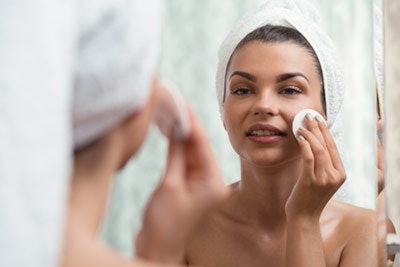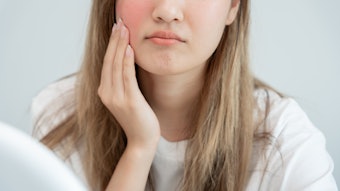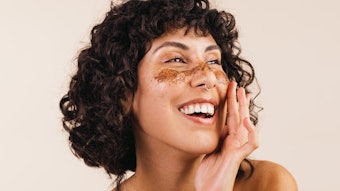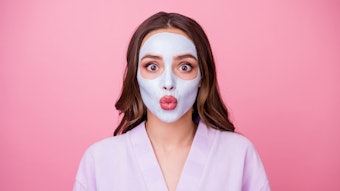
By day, the body protects itself; by night, the body repairs itself. As esthetic professionals, we are constantly reminding our clients about the importance of their before-bed skin care ritual to piggyback onto this physiological phenomenon. So what exactly does the skin do when we are out cold in the Land of Nod—or as we British compatriots like to say, Off to Bedfordshire?
Keeping the Beat
The circadian rhythm is a 24-hour cycle that regulates the bodies of all living creatures. In humans, it is often referred to as the body’s clock, as it tells us when to sleep, rise, eat, regulating many physiological processes. When we find ourselves getting hungry or sleepy at the same time each day, that’s the circadian rhythm at work.
Everyone has a slightly different circadian rhythm—hence larks (morning people) and owls (night people)—but the average length is 24 and one-quarter hours. Back in 1981, Charles Czeisler, M.D., Ph.D., of Harvard Medical School showed that daylight keeps a person’s internal clock aligned with the environment. This means that those who are most comfortable staying up late have naturally longer circadian rhythms than those who prefer to jump out of bed at the crack of dawn.
Face Time
Left to its own devices—that is, with no caffeine, party drugs, adrenaline or undue stress interrupting things— our bodies’ circadian sleep mode pattern kicks in around 9:00 p.m. Researchers also know that melatonin, the sleep hormone that protects the skin from pollution and sun damage during the day, begins to activate about this time signaling that it is time to wind down.
As we sleep, serious skin revival and repair processes really kick in including enhanced cell turnover and increased production of human growth hormone (HGH) that helps all tissue repair and regenerate. So, how can we as skin care professionals design our client’s nighttime skin care regime to capitalize on all this activity and ensure that the skin is refreshed and restored by morning?
Nocturnal Necessities
Start by advising your clients on a few strategies, and remember to remind them to treat their neck and décolletage at the same time.
Mind skin receptivity. The skin absorbs topical treatments the best around 9 p.m., according to Anna Persaud, CEO at This Works. “The mid-evening phase, around 9 p.m., is when the skin is most able to absorb topical treatments and DNA repair is boosted,” she notes. So, even if your client doesn’t generally go to sleep until midnight, advise her to perform her abolitions at this time.
Remove, rinse and repeat. Double cleansing at night is an absolute necessity no matter where you live because of today’s polluted atmosphere. Using two types of cleanser has become popular for good reason. Instruct clients to apply an oil-based product or micellar water first to gently remove makeup, followed by a deep pore cleanser that can be washed off. This is an efficient way to make sure the skin is scrupulously clean. This is essential if your client uses mineral-based cosmetics, which I love and recommend, but have found they can adhere to the skin more than conventional formulations.

Exfoliate as needed. Adding an exfoliating product or mechanical cleansing brush to the routine is also helpful. It can be recommended two to three times a week for sensitive skin and more often for normal skin. For those with super-sensitive or rosacea-prone skin, recommend avoiding exfoliating directly around the nostrils, as this area tends to redden and flair. Just make sure the client keeps the brushes properly cleaned after each use and changed on a regular basis.
Don’t forget to tone. I always recommend toning after cleansing to make sure not a scrap of anything remains on the skin and to restore the pH. Toning can also add a little extra hydration for those with extra dry skin.
Esthetician’s Tool Box
Figuring out what products to recommend is where your skill and experience come to the forefront. Each client is individual, of course, with skin that responds differently to products and ingredients. Here are some of my favorite ingredients that enhance the skin’s natural ability to regenerate itself.
Retinol. Retinol boosts collagen production and increases cell renewal. Reputed to aid in exfoliation, topical retinol products can also be sensitizing. Advise clients when first starting with this to use once or twice a week initially to build up the skin’s tolerance.
Antioxidants. The human body naturally contains antioxidants that neutralize free radicals in enzymes like superoxide dismutase, catalase and glutathione peroxidase. There are also smaller non-enzymatic antioxidants like vitamins C and E, coenzyme Q10 (ubiquinol) and glutathione. However, these natural mechanisms can become overwhelmed if too many free radicals are present, which is where the idea of topping up with antioxidant-containing products comes in. Great options to boost stability include vitamins C and E, ferulic acid, green tea, lutein, lycopene and resveratrol.
Niacinamide. Niacinamide (vitamin B3) boosts the skin’s ability to fight pollution from the outside and counteracts daily stress from the inside.
Peptides. Composed of amino acids, peptides form a vital part of the skin’s biological signaling mechanism. They carry information to the cells and stimulate fibroblast activity. In serum form, Matrixyl 3000, Argiriline and pentapeptides are three options that have proved most effective.
Stem cells. The advantage of plant-derived stem cells is that they are unspecialized or meristematic, until they receive a signal from the host plant to differentiate or change. Meristematic cells are generated from a defense response from the plant when it is cut. The responding callus contains stem cells that are now neutral. As they carry the entire DNA gene expression of the plant, they can turn themselves into any particular cell that is needed to heal or regenerate. After being cultured in the laboratory, these cells become a usable active ingredient that can protect against free radical damage caused by pollution, UV exposure, inflammation and photoaging when applied topically. The results can be dramatic, including smoother, toned skin with improved elasticity and firmness. Green apple, edelweiss, gardenia, sea fennel, grape and lilac are all great options.
ATP. Known as the “energy currency of life,” adenosine triphosphate (ATP) is a coenzyme that stores energy and improves microcirculation while restoring suppleness, radiance and firmness to the skin.
Hyaluronic acid. While we are sleeping, the skin becomes more permeable and consequently is more receptive to all the ingredients mentioned above. This is obviously a good thing; however, the downside is that it works both ways. Permeable skin can easily become dehydrated through loss of moisture, particularly in dryer, hotter or especially chilly climates where one sleeps with the air conditioner or heater on all night. Hyaluronic acid and ceramides are both natural components in human skin and are compatible with every complexion type needing a boost in the hydration department.
Snooze Fest
Getting enough sleep is a challenge for many of us these days, and your clients will appreciate your suggestions. I recommend printing this list off to hand out to them during their spa visits.

Natural light. Expose yourself to lots of bright, natural light during the day. Getting outside each day, even if it’s a quick 20-minute walk, will boost one’s ability to sleep at night as well as lift your mood and alertness.
Set times. Set regular bed and wake times whenever possible.
Don’t get hot and bothered. Avoid hot baths just before bed. Contrary to popular belief, a steaming bath can interfere with sleep by heating up the body’s core temperature. You want to cool down at bedtime. If you love that scalding soak in the tub, make sure you have it at least one hour before getting under the sheets.
Keep screen-free. This is a hard one for many of us, but banishing the laptop, TV and mobile phones is one of the best things any of us can do for our skin, our health and our stress levels. Exposure to the blue light these devices emit can inhibit the release of melatonin dramatically. If you can avoid looking at bright screens one to two hours before bedtime, the difference in both your skin and your mood will be dramatic.

Back is best. Sleep on your back if you can manage it. Lines, wrinkles and puffiness literally get pressed into faces that sleep smashed into a pillow.
Slip into silk. While sleeping on our backs is better for us, it is just not doable for many. To avoid those deep creases and puffy eyes, a silk pillowcase can help. These are also great for the man in your life to help prevent ingrown hairs.
Spray pillows. Use lavender or chamomile pillow sprays. This lovely touch can be effective to help you fall asleep more quickly. Inhaling the aromas with a deep breathing exercise for just a few minutes quiets the mind and allows you to slip into a deep, restful slumber.
Limit alcohol. Alcohol can interfere with a good night’s rest, so have that glass of wine earlier in the evening. A glass of water before bedtime will also help to keep the skin hydrated while you sleep. Also, nuts such as almonds and walnuts add oil and therefore moisture to the body and skin.
Lightly snack. This one is from the inestimable Anna Persaud who says, “Go for foods rich in tryptophan like turkey, chicken, pumpkin seeds and bananas.”
Emphasize the Importance
Putting nighttime to work for maximum skin health and beauty cannot be underestimated. When a client is compliant, that’s when the results can be really remarkable. A motivated client recognizes that she is in a partnership with her skin care professional to bring out the best in her skin. We know that what they do for their skin every day and every night is as important as what we do for them once a month when they visit us in the spa. Clearly, it makes all the difference in the world.











